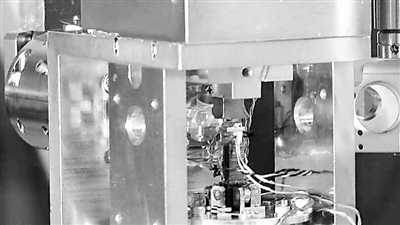

A close-up photo of the equipment inside the dilution refrigerator. Image credit: The University of Tokyo
Japanese scientists wrote in the latest issue of "Nature Communications" that they have created the first Bose-Einstein condensate (BEC) composed of quasiparticles. The development of technology has a major impact.
BEC is called the fifth form of matter, and the other four are solid, liquid, gas and plasma juxtaposed. In 1925, Einstein predicted the existence of BEC. In 1995, two scientists in the United States achieved BEC at only 0.17 millionths of a degree above absolute zero, for which they won the 2001 Nobel Prize in Physics. At present, most BECs are made of ordinary atoms, and BECs made of exotic atoms have not yet been realized.
Excitons are exotic atoms. When light hits a semiconductor, the energy excites electrons to jump to new energy levels, leaving holes that can be viewed as positively charged particles. The electron-hole pair formed by the mutual attraction of negative electrons and positive holes is an electrically neutral quasiparticle-exciton. Quasiparticles are not one of the 17 elementary particles described by the standard particle physics model, but still possess the properties of elementary particles such as charge and spin. Excitons, including positive excitons and sub-excitons, have been used to create electron-hole plasma and so on.
Hydrogen-like paraexcitons generated within cuprous oxide are considered to be one of the most promising candidates for the fabrication of exciton BECs within semiconductors. In the latest study, the research team used a dilution refrigerator to cool the side excitons in the bulk cuprous oxide to below 0.4 Kelvin (about minus 273.11 degrees Celsius), and fabricated exciton BECs. Using mid-infrared induced absorption imaging technology, Directly visualize exciton BECs in real space, and precisely measure their density and temperature, etc., to distinguish the similarities and differences between exciton BECs and ordinary atomic BECs.
They next plan to study the dynamics of how exciton BECs form within semiconductors and to study the collective excitation of exciton BECs, with the ultimate goal of building a platform based on exciton BEC systems to further elucidate their quantum properties and better understand Quantum mechanics of qubits strongly coupled to their environment.
(Original title "The fifth form of matter composed of quasiparticles is first created and will have an important impact on quantum computing")

